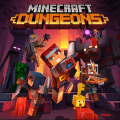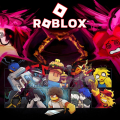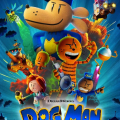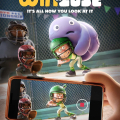Bad Parenting
Bad Parenting
The opening screen, with its audacious title and offbeat character designs, set a tone that was both humorous and subtly unsettling. I found myself eager to dive into a universe where the norms of traditional gameplay were cleverly subverted, and where the responsibilities and mishaps of parenthood were reimagined in the most entertaining manner.
Unearthing the Narrative Depth
From the outset, the storyline captured my imagination with a blend of absurdity and poignant social commentary. In my role, I was thrust into a world where the challenges of managing familial chaos were depicted with a satirical twist. The protagonist, known as Mr. Red Face, is not merely a caricature but a well-drawn character laden with personal dilemmas and humorous flaws. As I progressed, the narrative layers unfolded slowly, each scene nudging me to reflect not only on the in-game mishaps but also on the real-life complexities of parenting. This narrative strategy, merging humor with the gravity of personal failings, provided a thoughtful counterbalance to the sheer ludicrousness of the situations presented.
Innovative Gameplay Mechanics
The game surprised me with a set of gameplay mechanics that I had not anticipated. Unlike typical action-adventure titles, Bad Parenting 1 eschewed fast-paced combat for a more methodical exploration of troublesome domestic situations and intricate problem-solving scenarios. I found that the pace allowed for a deeper engagement with various in-game decisions, each affecting the overall progression in unexpected ways. The way the game interweaves time management aspects with creatively designed tasks challenged my reflexes and critical thinking, creating a rich environment where careful planning was rewarded. Every interaction reminded me of the unpredictable nature of both in-game events and real-life parenting responsibilities.
Graphical Splendor and Artistic Vision
The aesthetic appeal of Bad Parenting 1: Mr. Red Face left a significant impression on me. The game employs a visually striking, hand-drawn art style that marries cartoonish exaggeration with a semblance of realism. I was particularly drawn to the vibrant colors and meticulously detailed environments, which evoke a sense of controlled chaos befitting the game's themes. The character designs are equally memorable; each figure, no matter how minor, exuded personality that felt genuine and relatable. The art direction complemented the narrative with subtle symbolism woven into the background details—each image was a conversation piece, prompting me to stop and appreciate the layers of creativity behind even the simplest scene.
Dynamic Soundtrack and Auditory Experience
The auditory landscape of the game was another element that captured my interest. From the initial menu selection to the climactic in-game sequences, a dynamic and carefully composed soundtrack underscored nearly every moment. I found that the music struck the perfect balance between whimsical and serious, much like the storyline itself. The sound effects were equally engaging, enhancing the realism of chaotic scenarios while also providing comic relief when situations demanded it. I particularly appreciated the way ambient sounds and character voices were interwoven, contributing to a more immersive experience overall. This intricate sound design reinforced the idea that every element of the game, even those in the background, was meticulously planned.
Clever Humor and Satirical Undertones
What truly set Bad Parenting 1 apart for me was its clever use of humor. The dialogues and interactions were laced with a sense of irony that poked fun at societal expectations and norms around parenting. I laughed often at the absurd situations that emerged, such as the paradoxical mix of miscommunication and chaos in family gatherings, and the unexpected yet humorous twists in everyday activities. The game did not shy away from engaging with delicate subjects, instead presenting them in a way that was both funny and thought-provoking. This balance of levity and insight made each session not only entertaining but also a reflective commentary on modern life, where the art of parenting is rife with unpredictable challenges.
Engaging Challenges and Puzzle Elements
As I delved deeper into the game, I encountered a series of puzzles that demanded both logic and creativity. The challenges ranged from organizing a hectic morning routine to resolving unexpected complications during social events. Each puzzle was carefully designed to mirror the chaotic beauty of real-life situations, making me feel like an active participant in a simulation that tested my decision-making skills. I appreciated the variety of tasks, as they ensured that the gameplay remained fresh and engaging. Some puzzles required planning several moves ahead, while others were solved through spontaneous, imaginative solutions. The constant interplay between strategy and improvisation turned each in-game event into an intellectually stimulating experience.
Intuitive Interface and Control Design
One of the aspects that pleasantly surprised me was the intuitive interface and control design. Despite the inherent complexity of the scenarios, navigating through the game felt instinctive and free of unnecessary complications. The layout of menus and in-game options was thoughtfully structured, allowing me to quickly understand how to interact with the myriad of available elements. I found that the game streamlined the experience without sacrificing depth, so I could focus on exploring the intricate narratives without being bogged down by technical hindrances. The control scheme was responsive and fluid, reinforcing my immersion as I moved through both simple tasks and more elaborate challenges.
Character Design and Personality Exploration
Interacting with the diverse cast of characters enriched my in-game experience significantly. Beyond Mr. Red Face, the supporting characters were crafted with equal care and nuance. Each character, whether a long-suffering spouse or a mischievous child, possessed distinctive traits that added layers to the overarching story. I was fascinated by how the game managed to portray such multilayered personas in a manner that was both humorous and insightful. The character interactions often led to unexpected situations, challenging my preconceptions and forcing me to think about the dynamics of familial relationships in new ways. The subtle development arcs and well-timed emotional beats made every encounter a memorable part of my journey through the game.
Exploration of Social Dynamics and Family Life
The exploration of parental themes in this game is truly noteworthy. As I navigated through the trials and tribulations of managing a vibrant, if somewhat unorthodox, household, I was continually reminded of the delicate balance between control and chaos that defines family life. The developers took care to infuse every scene with a sense of realism that resonated with my own experiences, albeit through an exaggerated lens. Social dynamics played a crucial role, as each decision not only affected Mr. Red Face's immediate circumstances but also had ripple effects on every character in the household. The game invited me to contemplate the intricate art of balancing self-interest with communal well-being, a theme that is both universally relatable and refreshingly presented within a gaming context.
Reflective In-game Dialogue and Narrative Choices
Throughout my adventure, I encountered numerous instances where the dialogue was both reflective and humorous, serving as a pivotal tool in driving home the themes of the game. The narrative choices were often presented with a dose of sarcasm and wit that made me think carefully about my actions. I found that every conversation had the potential to open up subplots, each filled with intricate details that merged personal growth with comedic timing. These dialogues were not mere filler; they were instrumental in building the character arcs and setting the emotional tone for various sequences. The well-crafted interactions taught me that in the face of everyday chaos, humor and empathy can serve as powerful guides.
Interactive Replay Value and In-game Surprises
One of the most engaging aspects of Bad Parenting 1: Mr. Red Face is its capacity for interactive replay value. I discovered that my decisions in early chapters often opened up unforeseen avenues later on, leading to a nonlinear narrative that was rich with surprises and unexpected twists. The game incentivized me to revisit earlier parts with different strategies, allowing me to uncover hidden layers and alternate story outcomes. This replay value extended to the discovery of easter eggs and behind-the-scenes secrets that deepened my understanding of the world. The ability to experiment with various approaches and see the resultant changes consistently kept me coming back for more, ensuring that every playthrough felt like a fresh and unique experience.


















Leave a comment
Your comment is awaiting moderation. We save your draft here
0 Comments